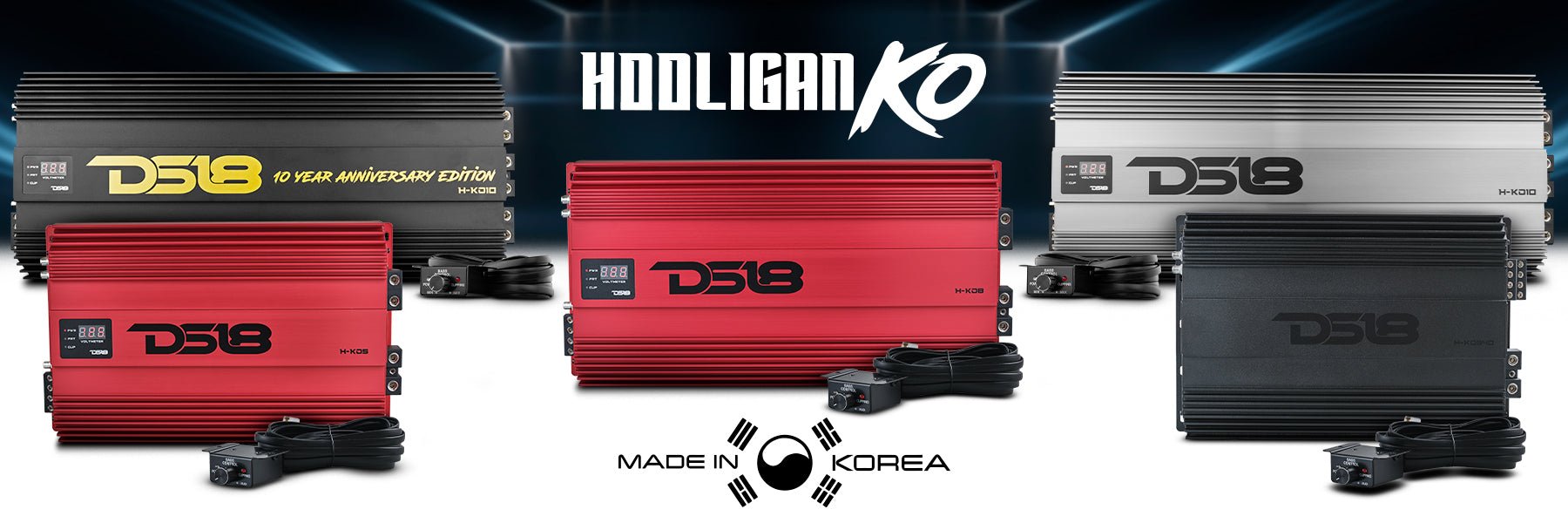Speakers are the building blocks for any audio system that delivers high-quality sound. Over time, speakers can become damaged or worn out, affecting their performance. From there you can either dish out a couple hundred for a new one: or hit up the experts at DS18 for tips on bringing your speakers back to life!
To get a more hands-on look at the reconing process, check out Mr. DS18’s detailed video guide here: Reconing with Mr. DS18.
We’re breaking down the process of reconing midranges and subwoofers, providing you with all the information you need to know to keep your speakers in top shape.

When Is Reconing Necessary
Speakers can experience a range of issues, including cone tears, voice coil damage, and surround deterioration. One of the signs that reconing may be necessary is when you notice a significant decrease in sound quality or if the speaker stops working altogether. Additionally, if you visually inspect the speaker and notice tears or damage to the cone or surround, reconing is likely required. It's important to address these issues promptly to prevent further damage and ensure optimal performance.

Speaker repair services: When to seek professional help
While DIY speaker repair can be a rewarding endeavor, there are instances when it's best to seek professional help. Here are some situations where professional speaker repair services may be the better choice:
- Lack of technical expertise: If you're unsure about your technical skills or lack experience in reconing speakers, it's best to leave the job to professionals. They have the knowledge and expertise to handle complex repairs.
- Extensive damage: If the speaker has extensive damage beyond the scope of reconing, professional repair services may be required. They can assess the damage and recommend the best course of action.
- Time constraints: If you don't have the time or resources to dedicate to reconing, professional repair services can provide a convenient and efficient solution.
- Warranty considerations: If your speakers are still under warranty, attempting DIY repairs may void the warranty. Professional repair services can ensure that the warranty remains intact.
By considering these factors, you can make an informed decision about whether to tackle reconing yourself or seek professional help.

Speaker cone repair guide: Tools and materials needed
Repairing a damaged speaker cone requires the right tools and materials. Here are some essential items you will need for speaker cone repair:
- Replacement cone: Choose a cone that matches the specifications of your speaker. Ensure that it is made from high-quality materials for optimal performance.
- Adhesive: Use a strong and durable adhesive specifically designed for speaker cone repair. Ensure that it is compatible with the cone material and allows for a secure bond.
- Soldering iron: A soldering iron is necessary for reattaching any loose or detached wires during the reconing process. Make sure to use the appropriate temperature settings to prevent damage.
- Screwdrivers: Different screws and fasteners may be used to hold the speaker components together. Have a set of screwdrivers of various sizes on hand to accommodate different types of screws.
- Cleaning supplies: Clean the speaker frame, voice coil, and other components before reconing. Soft brushes, cotton swabs, and isopropyl alcohol can help remove dirt, debris, and adhesive residue.
By having these tools and materials ready, you'll be well-equipped to tackle the speaker cone repair process.

Speaker cone replacement: How to choose the right cone
The cone is the part of the speaker responsible for producing sound and is available in various materials and designs. Here are some factors to consider when choosing a replacement cone:
- Material: Cones can be made from different materials such as paper, polypropylene, or aluminum. Each material has its unique characteristics, influencing the sound produced. Consider the desired sound quality and the intended use of the speaker when selecting the cone material.
- Size and shape: Cones come in various sizes and shapes to fit different speaker models and designs. Ensure that you choose a cone that is compatible with your specific speaker to ensure proper fit and performance.
- Surround type: The surround is the flexible ring that attaches the cone to the speaker frame. It is crucial to choose a replacement cone with a surround that matches the original design to maintain the speaker's intended performance.
If you're feeling a bit overwhelmed by all this speaker talk, DS18's got your back with their Recone Kits (RCK Series). These bad boys are the ultimate lifesavers for your DS18 speakers, bringing them back to life with top-notch quality and precision engineering. If you can’t find one for your specific model following the tips above should help in locating one that matches your speaker!
Replacing speaker cones: Step-by-step guide
Now that you have chosen the appropriate replacement cone, let's walk through the process of replacing the speaker cone. Specific instructions may vary depending on the speaker model and manufacturer. Here are the general steps involved:
- Preparation: Gather all the necessary tools and materials, including the replacement cone, adhesive, soldering iron, and screwdrivers. Ensure that you have a clean and well-lit workspace to work in.
- Disassembly: Carefully remove the damaged cone and surround by unscrewing any screws or clips that hold them in place. Take note of the original positioning and connections to aid in the reassembly process.
- Cleaning and prepping: Thoroughly clean the speaker frame, voice coil, and other components to remove any debris or adhesive residue. Ensure that all surfaces are clean and dry before proceeding.
- Cone installation: Apply a thin, even layer of adhesive to the cone's outer edge and carefully position it onto the speaker frame. Press firmly to ensure proper adhesion. Allow the adhesive to dry according to the manufacturer's instructions.
- Surround installation: Apply adhesive to the surround's inner edge and attach it to the cone, aligning it with the speaker frame. Press firmly to secure the bond. Allow the adhesive to dry completely before proceeding.
- Reassembly: Reattach any screws, clips, or other fasteners that hold the speaker components together. Ensure that all connections are secure and properly aligned.
- Testing: Connect the speaker to an audio source and test its performance. Listen for any abnormalities in sound quality or performance. Make any necessary adjustments or repairs to ensure optimal performance.
By following these steps, you can successfully replace the speaker cone and restore your speaker's functionality.

Speaker cone reconing techniques: Best practices for reconing
Reconing speakers requires precision and attention to detail to ensure optimal performance. Here are some best practices to keep in mind when reconing speaker cones:
- Take your time: Reconing is a delicate process that requires patience. Rushing through the steps can lead to mistakes or subpar results. Take your time and follow the instructions carefully.
- Use quality materials: When reconing, it's crucial to use high-quality replacement cones, adhesives, and other materials. Using inferior products may compromise the speaker's performance and longevity.
- Follow manufacturer guidelines: Different speakers and cone materials may have specific requirements for reconing. Always consult the manufacturer's guidelines and instructions to ensure proper installation.
- Seek professional help if needed: Reconing can be a complex process, especially for those without experience or technical knowledge. If you're unsure or uncomfortable with reconing your speakers, it's best to seek professional help to avoid causing further damage.
By adhering to these best practices, you can achieve a successful reconing process and enjoy optimal sound quality from your speakers.

Speaker maintenance: Tips for prolonging speaker life
To prevent the need for reconing and ensure the longevity of your speakers, regular maintenance is crucial. Here are some tips to help you prolong the life of your speakers:
- Keep speakers clean: Dust, dirt, and debris can accumulate on the speaker cones and affect their performance. Regularly clean your speakers with a soft cloth or brush to remove any buildup.
- Avoid placing speakers in extreme conditions: Extreme temperatures, humidity, and direct sunlight can damage speakers over time. Ensure that your speakers are placed in a well-ventilated area away from these conditions.
- Use proper amplification: Overdriving your speakers with excessive power can cause damage. Make sure to use an amplifier that matches the power requirements of your speakers to avoid strain and potential damage.
- Be mindful of volume levels: Playing music at excessively high volumes for extended periods can strain the speakers and lead to damage. Keep the volume at a reasonable level to prevent unnecessary wear and tear.
By following these maintenance tips, you can significantly extend the lifespan of your speakers and reduce the need for reconing.

Maintaining and preserving your speakers
Speakers are an investment, and proper maintenance and care are crucial to ensure their longevity and optimal performance. Whether you choose to embark on a DIY reconing project or seek professional help, it's essential to prioritize regular maintenance and address any issues promptly. By following the tips in this guide, your speakers will be LOUD like they used to.
For more tips and tricks on getting LOUD: follow DS18 on Instagram, Tiktok, and Facebook!








